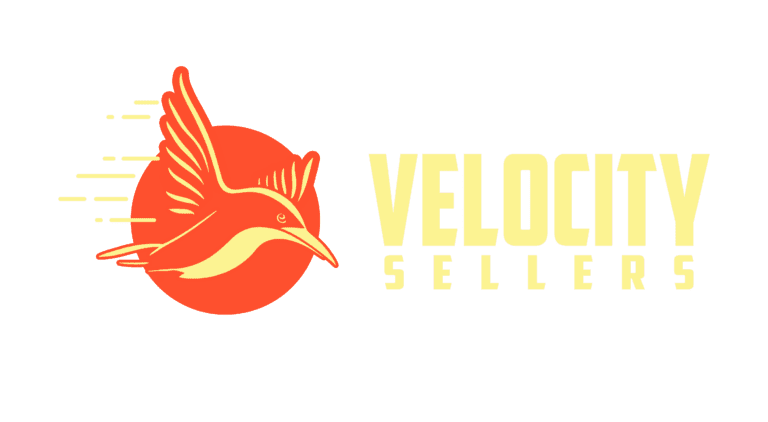Calculate your conversion rate, factors that affect it, and how to increase your conversion rate on Amazon.
More visitors to our listing is always great, but receiving appropriate visitors is more vital than merely having more people see our pages without taking any action.
How many of the hundreds or thousands of individuals who click on your listing actually make a purchase? It is far preferable to be visited by only 5 individuals per day, all of whom make a purchase, than to be visited by a thousand people per day, only two of whom make a purchase.
It’s one thing to get traffic. It’s another thing to get the correct traffic. If you embrace all types of traffic with open arms, there’s a risk that your conversion rate will suffer, and your ranking will suffer as a result.
If you advertise on Amazon, you’ve almost certainly come across the term “Conversion Rate.” It’s one of the most important metrics to track as a gauge of your progress. However, a surprising proportion of sellers are unaware of what this is or how to calculate it.
To easily navigate to the different sections of the guide, use the links below.
- What is conversion rate?
- Misunderstandings on conversion rate?
- What is a good rate?
- How to Calculate Conversion Rate
- Factors That Affect Rate
- How to Increase Your Conversion Rate on Amazon
- Conclusion
What is the Conversion Rate?
Depending on what action you want users to take, the conversion rate can indicate different things. If you want to calculate the conversion rate for email subscriptions, for example, divide the number of individuals who visit your site by the number of people who actually subscribe to your newsletter. The conversion rate is a metric used by Amazon to determine the number of page visits that result in a sale.
This is a crucial measure for several reasons:
- It provides you with a broad overview of the health of your listings.
- It improves the ranking of your product.
- It assists you in evaluating the outcomes of your listing copy A/B testing.
- It assists you in determining which areas require improvement.
A high conversion rate, on the other hand, does not always imply that your firm is performing well. Remember that one visitor who purchases your product means a conversion rate of 100%. As a result, rather than looking at the %, it’s still important to look at the actual figures.
Sites that sell a product or service often have a conversion rate of 1 to 2%. When it comes to Amazon, though, this number is substantially greater.
Amazon listings have a conversion rate of 10% to 15% on average. Prime members had an even higher percentage, over 74 percent. This is because many consumers who browse Amazon are already planning to buy something—if not right away, then soon.
Another reason why so many ecommerce retailers utilize Amazon as one of their platforms for selling things is because of this.
But probably the most essential reason to track conversion rates is that it is one of the variables that propels your listings to the top of search results. To rank listings, Amazon’s A9 algorithm takes conversion rates and sales velocity into account.
As a result, if your listing has a low conversion rate, your product is less likely to appear on the first page of Amazon search results.
Some Misunderstandings on How Amazon Calculates Conversion Rates
It’s disheartening to see intelligent people make poor decisions because they believe conversion rates are easy and straightforward. One of the most essential measures is conversion rates. They aid in the prediction of future production, the identification of bottlenecks, and the calculation of return on investment. It’s critical that you get them right.
Correctly calculating conversion rates is far more difficult than it appears on the surface. This is why a lot of individuals merely perform the bare minimum. They perform computations that appear to be true conversion rates and produce a credible amount, but they are just incorrect. Things can sometimes convert more than once. A single website visitor can fill out any form at the same time.
Importance of Conversion Rate
One of the most crucial factors for a brand’s long-term growth on Amazon is its conversion rate. Even if your product is the best on the market, a low conversion rate reduces the sales potential of your product. A high conversion rate, on the other hand, means better organic rankings and a higher return on investment from sponsored marketing, which means more sales and money in your pocket.
Determine prices: How To Develop An Effective Amazon Pricing Strategy
Importance of Amazon Conversion Rate for Amazon Sellers
Conversion rate is crucial to an Amazon seller since it affects earnings, organic search rankings, and overall sales on an e-commerce site like Amazon. Here are some key points to consider:
- A greater conversion rate will result in more sales because a bigger percentage of those who visit your product page will purchase it. As a result, you’ll make more sales and profit.
- You’ll also have a higher conversion rate and a higher organic ranking element. This means that when customers search Amazon for a product category, your goods will appear higher on the results pages.
- Your traffic will be influenced by a better conversion rate. If your product receives a lot of consumer traffic, this tells the Amazon algorithm that your product is relevant for that keyword. This will improve your product’s visibility on search engine results pages over time.
What is a good conversion rate?
A good conversion rate on Amazon is roughly 10-15% on average. This does not, however, account for any other factors that may influence whether or not your conversion rate is appropriate. The conversion rate must be viewed in context. There are numerous considerations that must be made.
Consider the sample size. Out of ten page views, you might get five conversions. That’s a 50% conversion rate, which is impressive, but you’ve only made 5 sales thus far. For instance, a conversion rate of 100 conversions per 1000 page views is a much lower conversion rate, but you’ve generated significantly more money.
Your pricing point and margins are important factors to consider. You can afford to have a lower conversion rate if your product is expensive or has high margins. In comparison, cheaper commodities that don’t produce as much profit need to move significantly faster, thus a conversion rate of 10-15% might not be enough.
How to Calculate Conversion Rate on Amazon
The conversion rate is calculated by dividing the total number of visits by the total number of sales transactions. But where do you acquire the information for this?
To begin, go into your Amazon Seller Central account and select the Reports option. Then, under Business Reports, you’ll see your Sales Dashboard.
Then go to the Sales and Traffic by Parent Item section of the Details Page. A table with multiple columns can be found here. Sessions and Total Order Items are the two that we’re interested in. Set the time range you’d like to look at. The last 30 days is the default setting. The following formula can be used to compute the conversion rate for each parent ASIN:
Conversion Rate = (Total Order Items) / Sessions
“Visits to your offer pages for a set time period” is how Amazon defines a session. It’s not the same as page views, which are the number of times your products have been viewed during the specified time period.
So if a consumer visits your website, then visits another seller’s page before returning to yours, only one session is recorded but two page views are recorded.
Smart marketing: How to Market Amazon Products Effectively for Success
Factors That Affect Conversion Rates
1. Number of Reviews
The higher your conversion rate, the more positive evaluations you have. Increasing the number of product evaluations is critical because they (well, the majority of them) originate from real customers who have used the products.
Numerous studies have shown that word of mouth is one of the most effective techniques to grow sales and patrons. And reviews are just the digital equivalent of it. When launching a new product, a prudent seller understands the value of obtaining a head start on reviews, which is why services like the Amazon Early Reviewer programme exist.
2. Keyword Choice
If you want to improve your conversion rate, one of the most crucial things to consider is your keyword selection. Most sellers are aware of the benefits of selecting the proper keyword but are unaware of the risks of selecting the incorrect one.
Let’s imagine you’re selling wired headphones, but you’ve found that “Bluetooth headphone” has a higher search volume. So, in the hopes of earning more page views, you take a chance and include that keyword, even though it’s incorrect.
Your listing may appear when a potential consumer searches for “Bluetooth headphones.” It’s possible that they’ll click on it. However, because they are looking for Bluetooth headphones, they will leave your page and search for a product that meets their requirements.
How will your conversion rate get affected? You’re raising the value of the denominator in the equation by increasing the number of individuals that see your listing, but you’re not obtaining the same rate of increase in sales. As a result, the conversion rate decreases.
3. Content Quality
When it comes to advertising on Amazon, space is limited. Although product descriptions are limited to 2000 characters, some listings have been reported to surpass this limit. To make your listing stand out, optimize your product description and include high-quality pictures.
How to Increase Your Conversion Rate on Amazon?
1. Write Relevant Descriptions
A stunning product photograph will attract customers to your listing, but a well-written description can persuade them to purchase your item. With 85 percent of buyers conducting internet research before purchasing a product, having an accurate description can make or break a transaction. Include every item of vital information in your product description. Customers want to know exactly what they’re getting, and now is the time to let them know.
Check the questions and answers parts of your Amazon listings on a regular basis to observe what queries are frequently asked. While they can (and should) be answered in that space, you should also include any often requested information in the product listing. It’s evident that customers care about it, and mentioning it in the product description is a terrific way to show potential customers that you’re aware of their typical problems.
2. Get Positive Reviews
Send follow-up emails to your consumers, urging that they leave a review. You can also launch an email campaign in which you send clients periodic emails politely reminding them that you value their feedback on the purchase. Positive evaluations are quite important in product conversion, and this would really assist you in your conversion efforts.
3. Optimize your Listing
Your descriptions must be optimized utilizing search engine optimization in addition to producing informative descriptions that address client questions. This is the process of ensuring that your text is written in such a way that it will appear in a search. The importance of this step cannot be emphasized, with 44 percent of American customers heading to Amazon before using a search engine.
Amazon also gives higher priority to listings that receive more clicks, so by refining your description, you can potentially raise the possibility that your product will appear when searched, receive more clicks, and move up the search page. Although SEO is constantly changing, there are still some best practices you can use today to help your products appear more frequently when customers search on Amazon for related terms.
Some of the best practices are:
- Add your brand’s name to the product’s title.
- In the product title, provide your keyword.
- Use Amazon’s Keywords in the Backend
- Fill in as much information as you can
4. Use High-Quality Images
If you utilize large enough images, Amazon will activate the Zoom function, which allows shoppers to zoom in and navigate around your goods. This is a fantastic method to highlight your items’ attention to detail and craftsmanship. Make sure your image is at least 1000×500 pixels in size to allow this.
You can have up to eight extra product images in addition to your primary image. Show showcase the different aspects of your product in this area. This is especially crucial when it comes to fashion and other products that will be seen after purchasing.
Main photos must have a white background and only display the product itself, according to Amazon. This can make it harder to stand out, so make sure you choose a photo of your goods that truly exemplifies what you’re selling.
Conclusion
Not only does your Amazon conversion rate show how many of your page visitors actually buy your product, but it also shows how much money you make. It also helps your listing rank higher, resulting in more visits over time. You may boost your conversion rate in a variety of ways. We’ve talked about a few of them in this article, but there are plenty more you can try.


